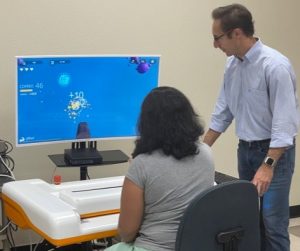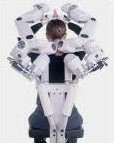Researchers from Arizona State University, the University of Houston, Barrow Neurological Institute [BNI], Phoenix, AZ, TIRR Memorial Hermann, Fourier Intelligence and Harmonic Bionics will investigate whether robotic therapies for stroke patients will provide greater benefits than conventional therapies.
Stroke is the 5th leading cause of death in the United States and is one of the major causes of disability. Conventional therapy is a form of stroke rehabilitation generally consisting of physical and occupational therapy that aims at strengthening muscle groups and relearning movement patterns used in activities of daily living (ADL). In contrast, robotic stroke therapy is based on using robotic devices to perform repetitive motions. Its major advantages are the delivery of high dosage and intensity training to stroke patients and the objective quantification of improvements in sensorimotor function. Peer-reviewed literature suggests robotic therapy might be a viable option for recovery in stroke patients. However, the extent to which robotic therapy may provide greater benefits than conventional therapy remains unclear. Moreover, recent research suggests that increasing subject engagement during therapy by capitalizing on intent detection via brain-machine interfaces (BMIs) can enhance the effectiveness of standard robotic rehabilitation. Our team will address the above gaps by comparing the efficacy of next-generation robotic therapy augmented with intent detection relative to (a) robotic therapy only and (b) conventional therapy to improve upper limb sensorimotor function in stroke survivors.
Many robotic devices for stroke rehabilitation are being developed in research laboratories around the world. Several companies, from multinationals (i.e., Hokoma) to startups (i.e., Fourier Intelligence, Harmonic Bionics), have been striving to improve robotic technology for stroke rehabilitation and market penetration. Despite the rapid growth that robotic rehabilitation industry has experienced in the last decade, the benefit-to-cost ratio of robotic rehabilitation relative to conventional rehabilitation remains unclear. The results of the proposed study have the potential to provide significant and timely insights into the extent to which robotic-based stroke rehabilitation might eventually substitute or complement conventional therapy. The broader societal impact of this research consists of validating the effectiveness of technology-based approaches to improve quality of life in stroke survivors. The proposed work has also commercial impact as experimental validation of the Fourier Intelligence M2 and Harmony robotic devices will enable wider adoption by stroke clinics of the proposed robotic technology.
This project supports the BRAIN Center’s mission to develop safe, effective and affordable personalized neurotechnologies for diagnostics, restoration, enhancement, and rehabilitation of sensory, motor, affective and cognitive functions.
The ASU BRAIN site is seeking industry partners to collaborate on research projects aiming at testing processes and/or technologies for deployment to the market as well as research and clinical settings. For more information, please contact Project Coordinator, Wendy Johnson at wendy.a.johnson@asu.edu.
For a current list of partners, go to http://nsfbrain.org/
This guest post was provided by the BRAIN Center


